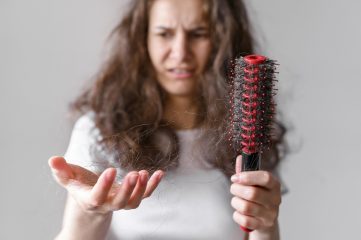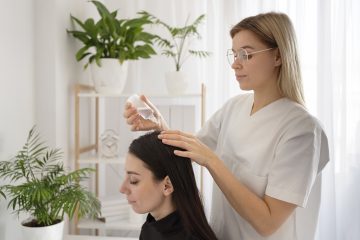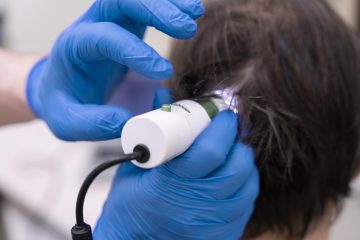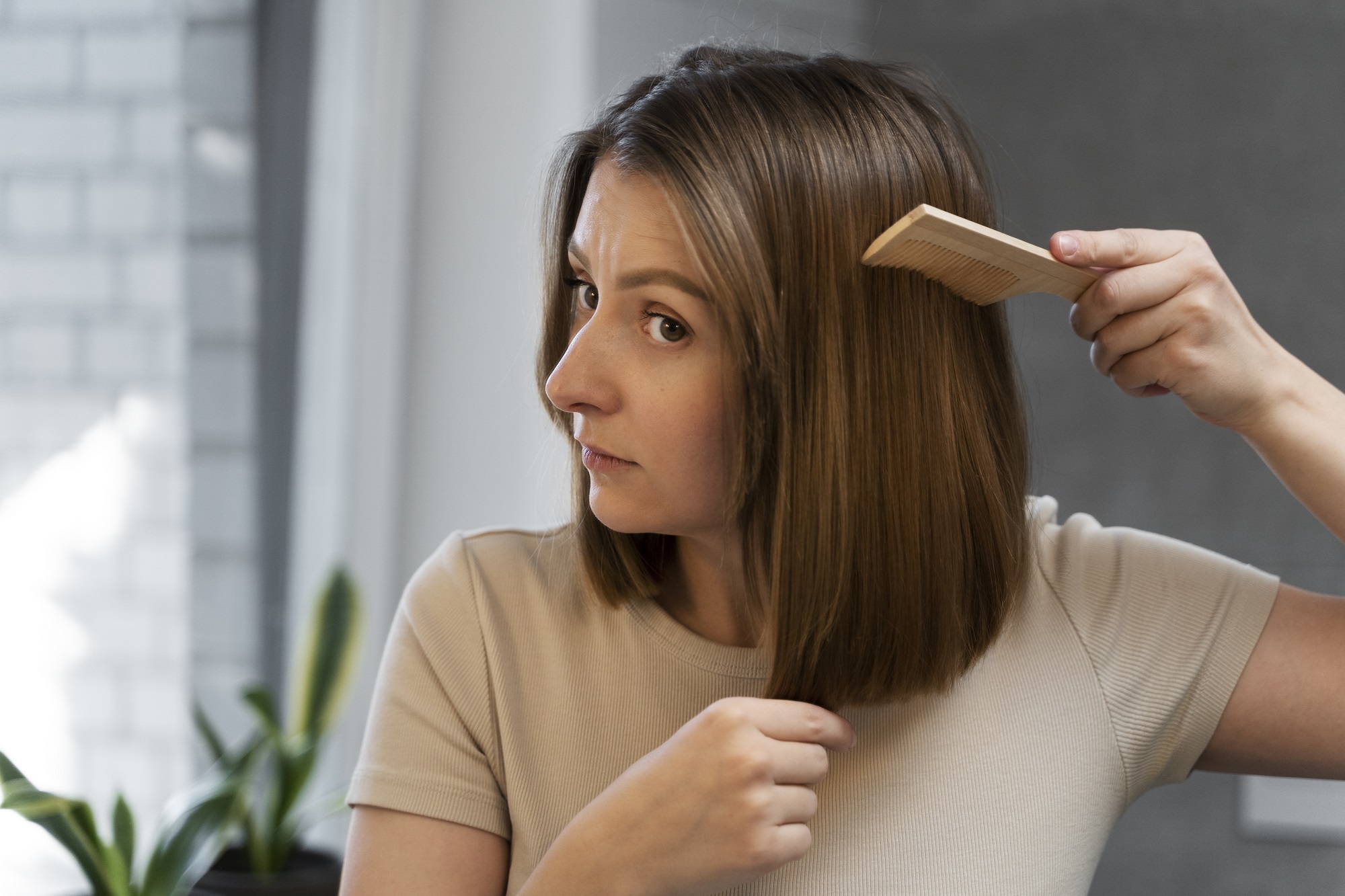Dealing with hair loss can be a distressing experience. Fortunately, there are various medical treatments available that can help address this issue and restore your confidence. From topical solutions to hair transplants, the options for treating hair loss are diverse and effective.
Understanding hair loss and its causes
Hair loss is a common condition that affects both men and women. It can be caused by a variety of factors, including genetics, hormonal imbalances, medical conditions, and lifestyle choices. Understanding the underlying causes of hair loss is crucial in determining the most appropriate treatment.
Genetics and hormonal imbalances:
In many cases, hair loss is genetically predetermined. This means that if your parents or close relatives experienced hair loss, you may be more prone to it. Genetic hair loss, also known as androgenetic alopecia, is caused by a combination of genetic and hormonal factors. It typically follows a pattern of gradual thinning on the top of the head or a receding hairline.
Medical conditions and lifestyle choices:
Certain medical conditions, such as thyroid disorders, autoimmune diseases, and scalp infections, can contribute to hair loss. Additionally, lifestyle choices such as poor nutrition, stress, and excessive styling or heat treatments can also weaken hair follicles and lead to hair loss.

Topical solutions for hair loss
Topical solutions are often the first line of defense when it comes to combating hair loss. These include shampoos, conditioners, and sprays that contain ingredients like minoxidil, which can help stimulate hair growth and prevent further loss.
Minoxidil-based products:
Minoxidil is an FDA-approved ingredient that has been clinically proven to promote hair growth. It works by widening blood vessels and opening potassium channels, which can increase blood flow to the hair follicles and stimulate hair growth. Minoxidil-based products are available over the counter in various strengths, with higher strengths typically requiring a prescription.
Ketoconazole-based products:
Ketoconazole is an antifungal medication that is commonly used to treat dandruff and scalp conditions. However, research has shown that ketoconazole may also have anti-inflammatory and anti-androgenic properties, making it an effective ingredient in hair loss treatments. Ketoconazole-based shampoos can help reduce scalp inflammation and block the hormone responsible for hair loss.
Natural remedies and essential oils:

Some individuals prefer to explore natural remedies and essential oils for treating hair loss. Essential oils like rosemary, peppermint, and lavender have been traditionally used for their potential hair growth-promoting properties. While these remedies may not have scientific backing, they can provide a holistic approach to hair care and improve the overall health of the scalp.
Oral medications for hair loss
In addition to topical solutions, there are oral medications available for treating hair loss. These medications are typically prescribed by a healthcare professional and may require long-term use to see results.
Finasteride:
Finasteride, also known by the brand name Propecia, is an oral medication that is commonly prescribed to treat male pattern baldness. It works by blocking the conversion of testosterone to dihydrotestosterone (DHT), the hormone responsible for hair loss. Finasteride can help slow down hair loss and promote hair regrowth in men, but it is not suitable for use in women.
Dutasteride:
Dutasteride is another oral medication that is used to treat hair loss in men. It works in a similar way to finasteride by blocking the production of DHT. Dutasteride is often prescribed for individuals who do not respond well to finasteride or have more severe cases of hair loss.
Side effects and considerations:
While oral medications can be effective in treating hair loss, it’s important to be aware of potential side effects and considerations. Both finasteride and dutasteride can cause sexual side effects, including decreased libido and erectile dysfunction. It’s crucial to discuss these potential side effects with a healthcare professional before starting any oral medication for hair loss.
Laser therapy for hair loss
Laser therapy, also known as low-level laser therapy (LLLT), is a non-invasive treatment that uses red light wavelengths to stimulate hair growth. This therapy works by increasing blood flow to the scalp and promoting cell metabolism in the hair follicles.

In-office laser treatments:
In-office laser treatments are usually performed by dermatologists or hair restoration specialists. During these sessions, a laser device is used to emit red light onto the scalp. The treatment is painless and typically takes less than 30 minutes per session. Multiple sessions are usually required to see noticeable results.
At-home laser devices:
There are also at-home laser devices available for individuals who prefer the convenience of treating their hair loss at home. These devices are typically handheld and emit red light directly onto the scalp. It’s important to follow the manufacturer’s instructions and use the device consistently to achieve optimal results.
Platelet-rich plasma (PRP) therapy for hair loss
Platelet-rich plasma (PRP) therapy is a relatively new treatment for hair loss that involves injecting a concentrated solution of the patient’s own platelets into the scalp. Platelets contain growth factors that can stimulate hair follicles and promote hair growth.
The PRP procedure:
During a PRP procedure, a small amount of blood is drawn from the patient and then processed to separate the platelets from other blood components. The concentrated platelets are then injected into the scalp, targeting areas of thinning or balding. The procedure is minimally invasive and usually takes less than an hour to complete.
Results and considerations:
PRP therapy has shown promising results in stimulating hair growth and improving hair density. However, it may require multiple sessions to achieve optimal results. It’s important to note that PRP therapy is not suitable for everyone, and a healthcare professional should assess the individual’s eligibility for this treatment.
Micro-needling for hair loss
Micro-needling, also known as collagen induction therapy, is a procedure that involves using a small handheld device with tiny needles to create micro-injuries in the scalp. These micro-injuries stimulate the body’s natural healing response and can promote hair growth.
The micro-needling procedure:
During a micro-needling procedure, a dermatologist or trained professional uses a derma roller or derma pen to create controlled micro-injuries in the scalp. This process stimulates the production of collagen and increases blood flow to the hair follicles. The procedure is typically done under local anesthesia to minimize discomfort.
Results and considerations:
Micro-needling has shown promising results in improving hair density and promoting hair growth. However, multiple sessions may be required, and results may vary depending on the individual. It’s important to consult with a healthcare professional to determine if micro-needling is the right treatment option for your specific needs.
Hair transplant procedures

For those experiencing more severe hair loss, hair transplant procedures may be a viable solution. This surgical technique involves taking hair follicles from a donor area, typically the back or sides of the head, and transplanting them to areas of thinning or balding. With advancements in technology, such as follicular unit extraction (FUE), hair transplants have become increasingly successful and natural-looking.
Follicular unit transplantation (FUT):
Follicular unit transplantation, also known as strip harvesting, is a hair transplant technique that involves removing a strip of skin from the donor area and then dissecting it into individual hair follicles. These follicles are then transplanted into the recipient area using tiny incisions. FUT is a more invasive procedure compared to FUE and may result in a linear scar at the donor site.
Follicular unit extraction (FUE):
Follicular unit extraction is a hair transplant technique that involves harvesting individual hair follicles directly from the donor area using a small punch tool. These follicles are then transplanted into the recipient area. FUE is less invasive compared to FUT and typically results in minimal scarring.
Results and considerations:
Hair transplant procedures can provide long-lasting and natural-looking results. However, it’s important to note that these procedures are surgical and may require a significant investment of time and money. It’s crucial to consult with a qualified hair transplant specialist to assess your eligibility for these procedures and determine the most suitable technique for your specific needs.
Non-surgical hair replacement options
In addition to surgical options, there are also non-surgical hair replacement options available for individuals who prefer a non-invasive approach to hair restoration.
Hairpieces and wigs:
Hairpieces and wigs are popular non-surgical options for individuals with partial or total hair loss. These can be customized to match your natural hair color and style, providing a natural-looking solution. Advances in technology have also led to the development of lightweight and breathable materials, making modern hairpieces and wigs more comfortable to wear.
Scalp micropigmentation:
Scalp micropigmentation is a non-surgical procedure that involves tattooing tiny dots on the scalp to mimic the appearance of hair follicles. This technique can create the illusion of a closely shaved head or a fuller head of hair, depending on the desired outcome. Scalp micropigmentation is a suitable option for both men and women with various degrees of hair loss.
Hair thickening fibers:
Hair thickening fibers are a temporary solution for individuals looking to instantly improve the appearance of thinning hair. These fibers are made from natural keratin and can be sprinkled onto the scalp to create the illusion of fuller hair. They adhere to existing hair strands and can withstand wind, rain, and sweat.
Choosing the right treatment for your hair loss

When considering medical treatments for hair loss, it’s important to consult with a qualified professional who can assess your unique needs and recommend the most suitable options. Factors such as the underlying cause of hair loss, the severity of the condition, and personal preferences should be taken into account when choosing a treatment.
Consultation with a healthcare professional:
A consultation with a healthcare professional, such as a dermatologist or hair restoration specialist, is essential in determining the most appropriate treatment for your hair loss. They can evaluate your hair loss pattern, perform necessary tests, and provide personalized recommendations based on your individual needs.
Combination treatments:
In some cases, a combination of treatments may be recommended to achieve optimal results. For example, a healthcare professional may suggest using a topical solution in conjunction with laser therapy or oral medications. Combination treatments can target different aspects of hair loss and provide a comprehensive approach to treatment.
Conclusion
Dealing with hair loss can be challenging, but there are numerous medical treatments available that can help address this issue. From topical solutions to hair transplants, the options for treating hair loss are diverse and effective. By understanding the underlying causes of hair loss and consulting with a qualified professional, you can find a treatment that suits your unique needs and helps you regain your luscious locks. Remember, everyone’s hair loss journey is different, so it’s important to be patient and consistent with your chosen treatment. With the right approach, you can take control of your hair loss and restore your confidence.
